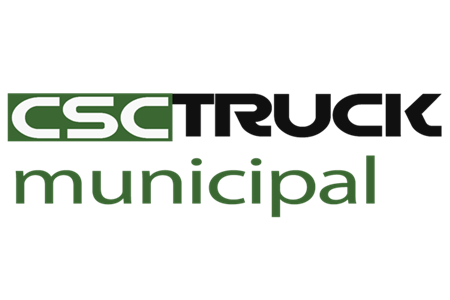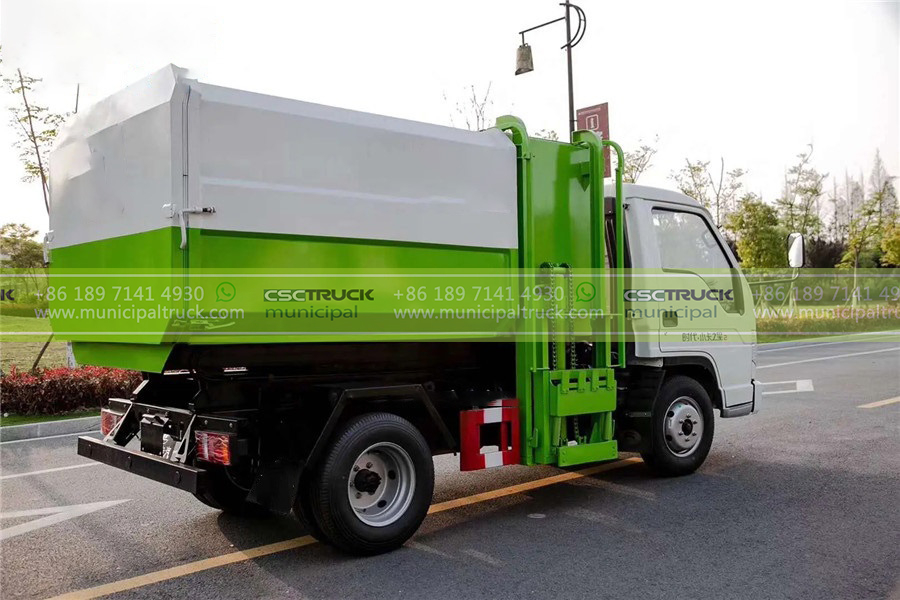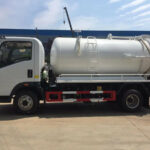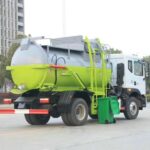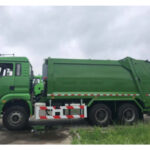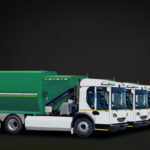The familiar weekly ritual of garbage collection, a cornerstone of public health and urban living, has undergone a quiet but profound transformation. Gone are the days when sanitation crews manually heaved countless bins into the back of a truck, a physically demanding and time-consuming process fraught with inefficiency and ergonomic hazards. The rise of the side loader garbage truck represents a quantum leap in residential waste management, leveraging sophisticated automation to streamline operations, enhance worker safety, boost productivity, and deliver consistent, reliable service to communities. This specialized vehicle, with its distinctive arm reaching from the side, is far more than just a truck; it’s an integrated system designed to conquer the unique logistical challenges of collecting waste from thousands of curbside carts, efficiently and effectively.
The Residential Collection Conundrum: Volume, Frequency, and Labor Intensity
Collecting waste from single-family homes presents a distinct set of hurdles compared to commercial or industrial pickup:
- Sheer Scale and Repetition: Residential routes involve hundreds, often thousands, of individual stops per day. Each stop traditionally required workers to exit the cab, manually roll heavy bins to the truck, lift and empty them (often causing spillage), and return the bin – a cycle repeated endlessly, leading to fatigue and potential injury.
- Standardization and Accessibility: Homes utilize standardized wheeled carts provided by the waste hauler or municipality, designed for compatibility with automated systems. However, placement by residents (too close to mailboxes, cars, or trees) can create accessibility challenges for manual and automated systems alike.
- Labor Shortages and Safety Concerns: The sanitation industry faces persistent labor shortages, exacerbated by the physically taxing nature of traditional collection methods. Musculoskeletal injuries from lifting and repetitive motion are a significant concern, driving up costs and impacting workforce retention.
- Efficiency Imperative: With growing populations and rising fuel and operational costs, waste haulers face immense pressure to maximize the number of stops completed per route per hour without sacrificing service quality or safety.
- Resident Expectations: Homeowners demand reliable, punctual, and clean collection services. Slow or inefficient collection can lead to missed pickups, overflowing bins, and resident complaints.
These pressures created an urgent need for a technological solution that could maintain service levels while addressing labor and safety issues – paving the way for the side loader garbage truck.
Engineering Automation: Anatomy of a Side Loader Garbage Truck
The side loader garbage truck is a marvel of hydraulic engineering and mechanical design, built specifically to automate the core task of lifting and emptying residential carts. Its defining features are purpose-built:
- Specialized Chassis and Cab: Built on robust commercial truck chassis, often featuring a lower-profile cab for enhanced visibility down residential streets and alleys. The driver typically operates alone, controlling the entire collection process from the cab.
- The Hydraulic Lift Arm (Automation Core): Mounted along the passenger side of the truck, this multi-jointed, telescopic arm is the heart of the automation. Engineered with significant reach and lifting capacity, it’s controlled precisely via joysticks and buttons within the cab.
- Gripper/Claw Mechanism: At the end of the lift arm is a specialized gripper or claw. This component is designed to securely grasp the standardized lugs or handles found on compatible residential wheeled carts. Its design ensures a firm hold during the lift and dump cycle.
- Hopper and Packing System: Emptied waste is deposited into a large hopper located on the side of the truck body. From there, a powerful hydraulic packer blade compresses the waste into the main body cavity, maximizing payload capacity and reducing the frequency of trips to the disposal site.
- Cart Management: After emptying, the arm gently and precisely returns the cart to its pickup location, ideally aligned correctly near the curb.
Subsection: The Automation Sequence – One Driver, One Fluid Motion
The true power of the side loader garbage truck lies in its seamless, automated collection cycle:
- Approach and Positioning: The driver approaches the curbside cart, maneuvering the truck so the cart is within the operational range of the lift arm (typically on the passenger side).
- Arm Deployment and Cart Engagement: From the cab, the driver activates the controls. The hydraulic arm extends smoothly. The gripper/claw opens, positions itself around the cart’s lugs, and clamps shut securely. Advanced systems use cameras and sensors to aid precise positioning.
- Lift, Tilt, and Empty: Once engaged, the arm lifts the cart vertically upwards. At the apex of the lift, the arm tilts the cart over the hopper opening. Gravity empties the contents into the hopper. The entire lift-tilt-empty motion is a continuous, fluid hydraulic operation.
- Cart Return and Reset: After emptying, the arm reverses the motion, lowering the cart back to its original position (or very near it) and releasing the gripper. The cart is left upright at the curb.
- Compaction: Simultaneously or immediately after cart emptying, the driver can activate the packer blade to compress the newly deposited waste into the main body, creating space for the next cart.
This entire sequence, from cart grab to return, often takes less than 15 seconds and is performed without the driver ever leaving the cab. This is the essence of residential collection automation.
Tangible Benefits: Efficiency, Safety, and Service Transformation
The adoption of side loader garbage trucks delivers concrete advantages for haulers, workers, municipalities, and residents alike:
- Dramatically Increased Productivity: Automation slashes the time per stop. A single driver can service significantly more homes per route compared to manual collection crews requiring multiple workers. This translates directly into reduced fuel costs, fewer trucks needed on the road, and optimized route efficiency.
- Enhanced Worker Safety: Eliminating the need for workers to manually lift heavy bins is the paramount safety benefit. This drastically reduces strains, sprains, back injuries, and other musculoskeletal disorders associated with traditional collection. Workers remain safely within the cab, away from traffic and potential hazards on the ground.
- Labor Cost Optimization & Mitigating Shortages: Automation allows operations to function effectively with one worker per truck instead of two or three. This directly addresses labor shortages and helps control rising labor costs while maintaining or even increasing collection capacity.
- Improved Service Consistency and Cleanliness: Automated lifting minimizes spillage compared to manual dumping. Carts are handled consistently and returned neatly to the curb. Faster collection times contribute to more reliable adherence to schedules.
- Reduced Physical Impact on Neighborhoods: Quieter operation compared to constantly slamming manual bins and fewer large trucks idling for long periods (due to faster stops) contribute to a less disruptive presence in residential areas.
- Standardization and Cart Compatibility: The system necessitates standardized carts, simplifying logistics for haulers and ensuring consistent service delivery for residents.
Beyond the Arm: Technology Integration and Evolving Capabilities
Modern side loader garbage trucks are increasingly becoming integrated technology platforms, moving beyond basic mechanical automation:
- Route Optimization Software: Integrated GPS and fleet management systems guide drivers on the most efficient routes, track progress in real-time, and provide data for continuous route improvement, minimizing mileage and fuel consumption.
- Onboard Weighing Systems: Sensors can weigh each cart as it’s lifted, providing valuable data on waste generation patterns per household, enabling potential pay-as-you-throw billing models, and improving overall route planning and resource allocation.
- Camera Systems and Safety Sensors: Multiple cameras (covering the lift arm, hopper, rear, and sides) provide the driver with critical visibility, enhancing safety during maneuvering and cart collection, especially in tight spaces. Proximity sensors alert drivers to obstacles.
- Cart Identification (RFID): Radio Frequency Identification (RFID) tags on carts, scanned by a reader on the lift arm, allow for precise identification of the service address. This enables verification of service, supports billing accuracy, helps track missing carts, and can flag issues like improper materials in recycling carts.
- Telematics and Fleet Health Monitoring: Data on truck performance, engine health, hydraulic pressure, and maintenance needs is transmitted remotely, enabling predictive maintenance, reducing downtime, and optimizing fleet management.
This technological layer transforms the side loader from a simple collection machine into a data-generating asset, driving further efficiencies and insights for waste management companies.
The Enduring Power of Automation: A Sustainable Future for Curbside Collection
The side loader garbage truck stands as a testament to how targeted automation can revolutionize an essential public service. While concepts like subterranean vacuum systems or advanced robotics capture imagination, the side loader remains the dominant, most practical, and cost-effective solution for the sprawling, decentralized nature of single-family home collection. Its core automation – the hydraulic arm and gripper – solved the fundamental labor and safety challenge that plagued the industry for decades. The ongoing integration of digital technologies ensures its continued relevance and efficiency gains. It has fundamentally reshaped the economics and ergonomics of residential waste hauling, allowing fewer workers to manage larger territories safely and effectively. As urban density increases and sustainability pressures mount, the efficiency gains from automation contribute directly to reduced fuel consumption and emissions per ton of waste collected. The sight of the side loader’s arm deftly grabbing, lifting, and emptying a cart is a daily symbol of reliable, modern sanitation – an automated dance performed thousands of times a day, ensuring our neighborhoods remain clean and healthy with remarkable consistency. This sophisticated garbage truck, operating with quiet efficiency, is an indispensable partner in maintaining the vital flow of waste away from our homes, demonstrating that sometimes the most impactful revolutions happen one automated cart lift at a time.
